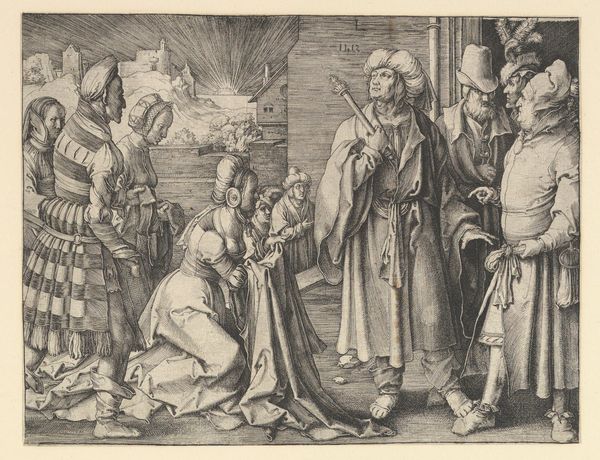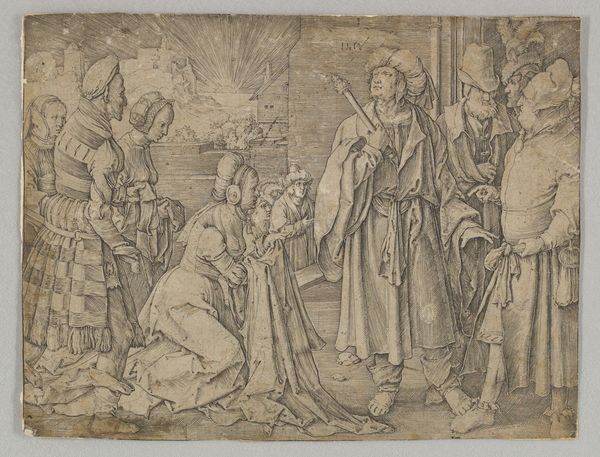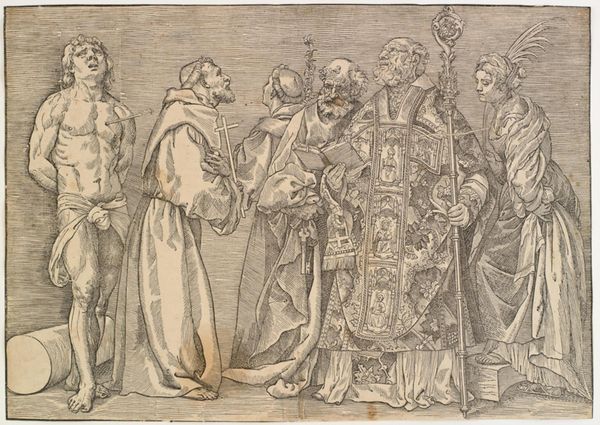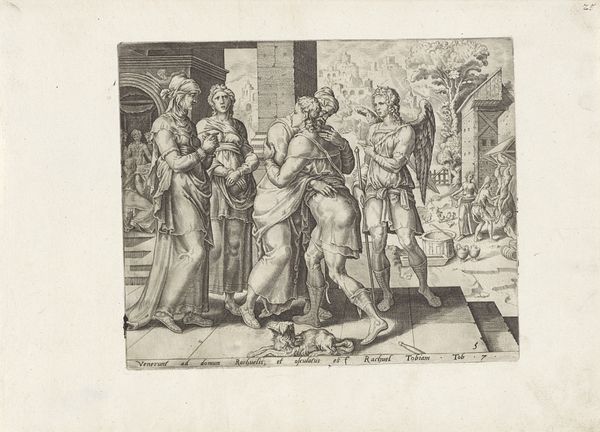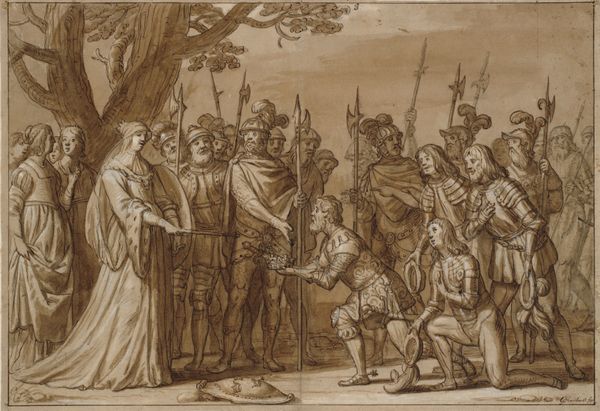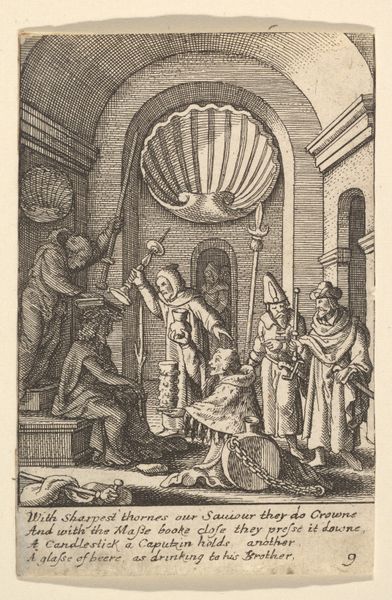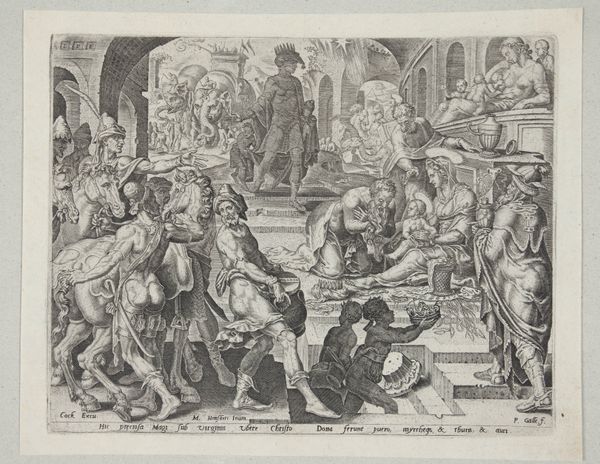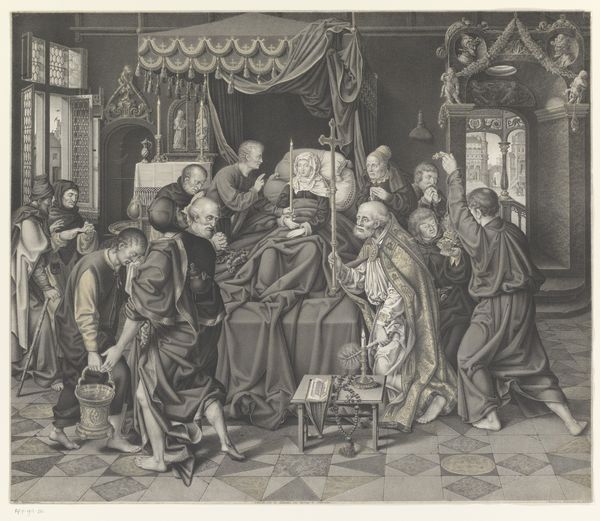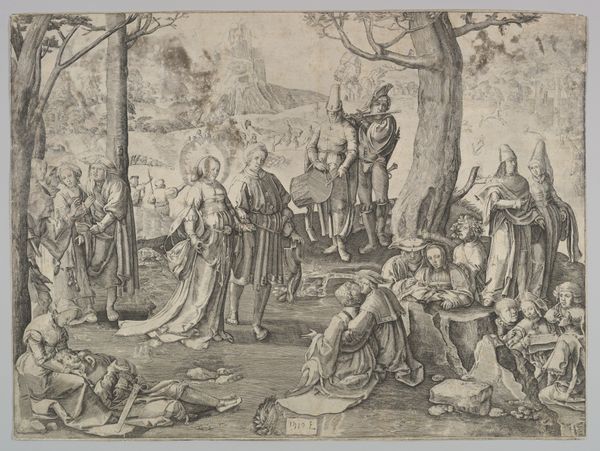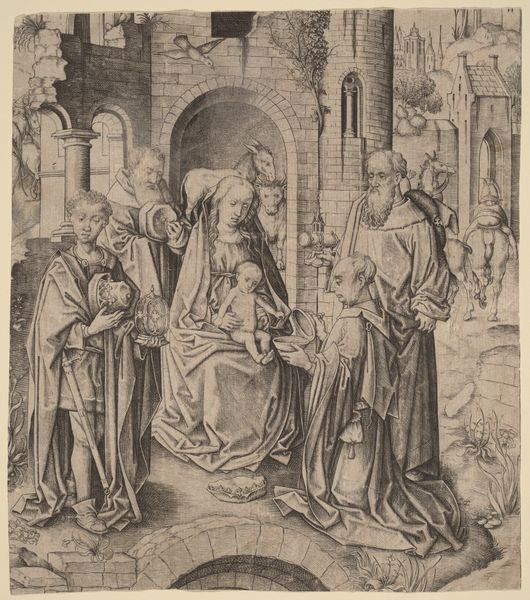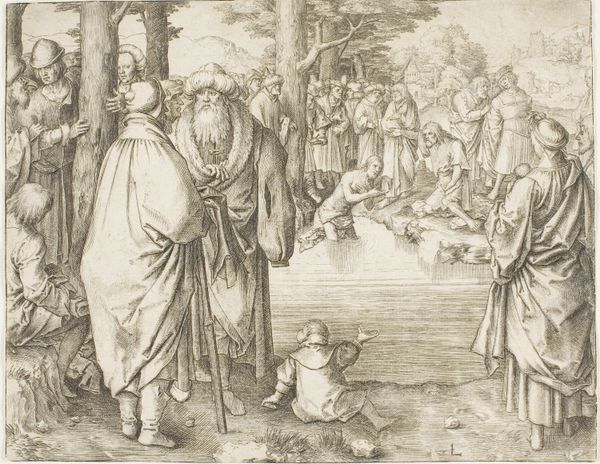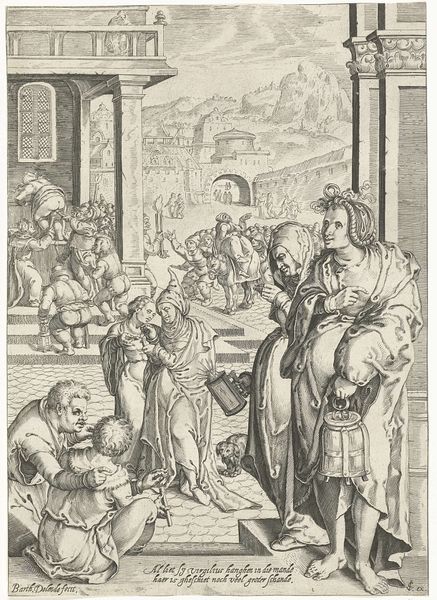
drawing, print, engraving
#
drawing
#
narrative-art
# print
#
figuration
#
men
#
history-painting
#
northern-renaissance
#
engraving
Dimensions: plate: 4 3/4 x 6 7/16 in. (12 x 16.3 cm)
Copyright: Public Domain
Curator: Lucas van Leyden created this piece, "Potiphar's Wife Accusing Joseph," an engraving dating somewhere between 1489 and 2006. The print depicts a scene from the Book of Genesis. My immediate thought is that it's incredibly dense—the composition is packed with figures and details. Editor: The cross-hatching is really extraordinary. You can feel the texture of the clothing, the weight of the fabrics. I am interested to know the role the paper quality has here in conveying the overall value of the piece as an object in its own right and outside the illustration itself. Curator: Absolutely, the details are significant here. It visualizes the story of Joseph and Potiphar's Wife. The woman falsely accuses Joseph of assault after he flees from her advances. We see her kneeling, presenting Potiphar with Joseph's cloak as supposed evidence. The symbolism is rather transparent here: the abandoned cloak as proof. What is left behind signifies loss, lack, betrayal, as if Joseph was missing from it or abandoned his true self. Editor: So the labor, time, and tools used to produce this piece become a stage, a way of making a believable rendition of a story, of a moral concept. Curator: Precisely! Each character embodies a specific symbolic role: Potiphar, holding his staff, stands as a figure of authority. Notice how van Leyden captures their emotional states—the wife's deceptive grief versus Joseph's absent innocence. It reflects the Renaissance interest in depicting human psychology. But the landscape feels just as charged with the emotions involved. It is far from neutral. Editor: The printmaking process itself democratized image production, making narratives accessible to a wider audience. It's fascinating to consider how these replicated images influenced social norms and understanding of biblical tales and themes during the Northern Renaissance, especially around ideas such as the family unit. Curator: The printmaking indeed allowed the dissemination of ideas on a scale never possible before and in multiple copies. It is fascinating to see the story unfold, in print, with so much depth. I walk away contemplating the power of storytelling through visuals and the stories we tell and how. Editor: I’m considering how art history tends to prize unique pieces while overlooking the vast landscape of productive visual labor like this, and how printmakers created systems of labor for themselves.
Comments
No comments
Be the first to comment and join the conversation on the ultimate creative platform.
